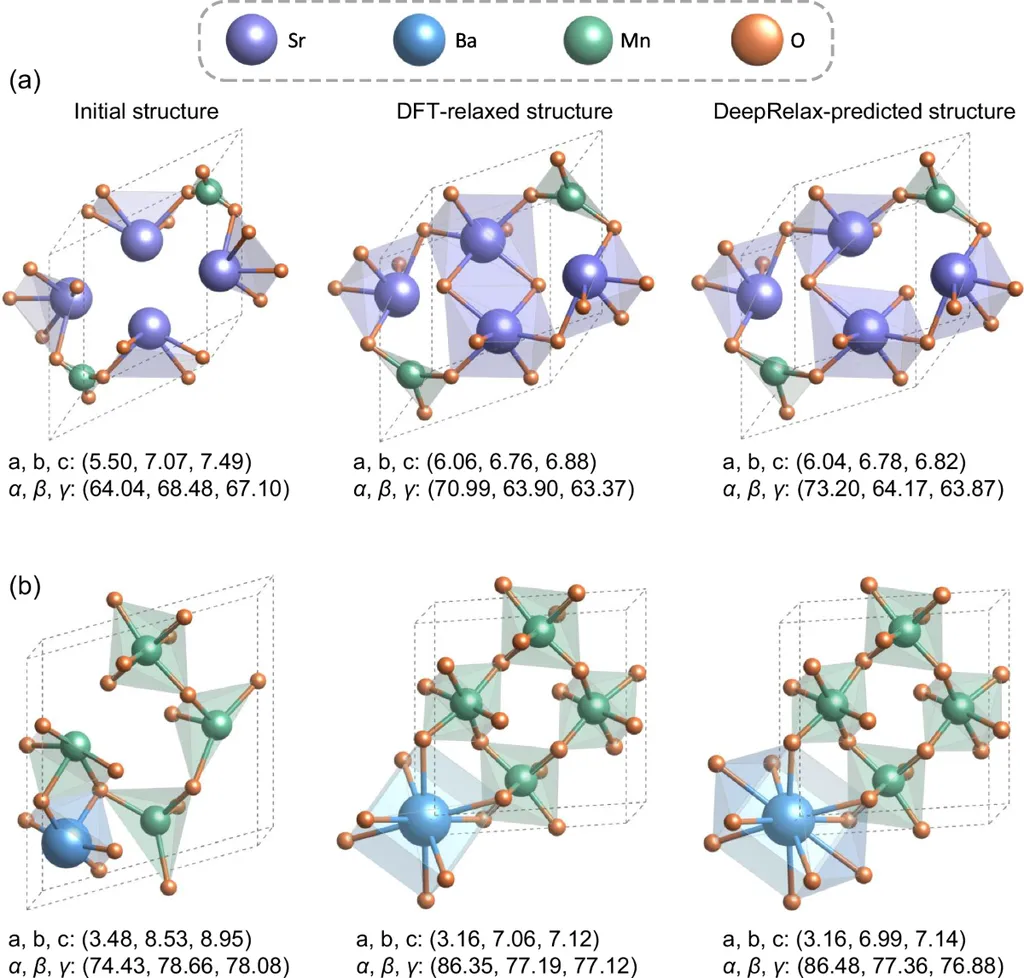In the quest to optimize material design and accelerate the discovery of new compounds, researchers have turned to artificial intelligence, and a recent study published in the journal *npj Computational Materials* (translated from Russian as “Computational Materials”) is making waves. The research, led by Elena Trukhan from the Material Discovery Laboratory at the Skolkovo Institute of Science and Technology, introduces a novel approach using Deep Reinforcement Learning (DRL) to enhance the efficiency of crystal structure relaxation—a critical process in materials science.
Crystal structure relaxation is a computational method used to find the lowest energy configuration of a crystal structure, which is essential for predicting material properties. Traditional methods rely on classical optimization algorithms, which can be time-consuming and computationally expensive. Trukhan and her team have developed a DRL model that learns from interactions within atomic systems, potentially revolutionizing the way researchers approach this problem.
“Our goal was to explore whether deep reinforcement learning could outperform classical optimization algorithms in terms of speed and efficiency,” Trukhan explained. “The results were promising, demonstrating that DRL models can indeed enhance the efficiency of structure relaxation.”
The study compared different types of neural network architectures and reinforcement learning algorithms, focusing on Al-Fe (aluminum-iron) structures. The team generated potential energy surfaces using Embedded Atom Method (EAM) potentials, a common approach in computational materials science. They found that the best-performing DRL models not only accelerated the relaxation process but also showed the ability to generalize learned interaction patterns from smaller atomic systems to more complex ones.
This generalization capability is particularly significant for the energy sector, where the discovery of new materials with desirable properties—such as improved conductivity, strength, or thermal stability—can lead to breakthroughs in energy storage, generation, and transmission. For instance, more efficient materials could enhance the performance of batteries, solar panels, and other energy technologies, making them more cost-effective and environmentally friendly.
“The potential applications of this research are vast,” Trukhan noted. “By accelerating the discovery and optimization of materials, we can drive innovation in various industries, including energy, aerospace, and electronics.”
The study also examined the influence of parameter settings on model performance, ensuring that the DRL approach is robust and adaptable to different scenarios. The findings suggest that DRL models could become a valuable tool in the materials scientist’s arsenal, complementing and potentially surpassing traditional optimization methods.
As the field of materials science continues to evolve, the integration of AI and machine learning techniques is expected to play a pivotal role. Trukhan’s research highlights the potential of DRL to shape future developments, offering a glimpse into a more efficient and innovative approach to material design.
With the publication of this study in *npj Computational Materials*, the scientific community is one step closer to unlocking the full potential of AI-driven materials discovery, paving the way for a new era of technological advancements in the energy sector and beyond.

